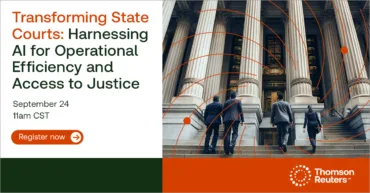Healthcare has always been a stressful business. The COVID-19 pandemic and now the latest wave of infections wrought by the Delta variant have put the work of providers, insurers, and government healthcare program administrators squarely in the spotlight.
That makes preventing and investigating healthcare fraud tougher and more important than ever. Fraudulent claims, which beset Medicare and Medicaid in particular, cost tens of billions of dollars annually. That’s money stolen from patients, insurers, health systems, or taxpayers (or any combination of these). And that’s money that could be used to deliver quality care.
That is why maintaining program integrity is so essential to the healthcare market. Whether you’re a provider, insurer, or program administrator, you know that your efforts to fight fraud are fraught with numerous challenges. How can you conduct investigations and quickly uncover instances of fraud before they become multi-million-dollar problems?
Healthcare fraud schemes are more than skin deep
Many providers are familiar with how healthcare payers can be defrauded. Some of the most common examples include submitting claims for services that were not used or were ineligible for payment, intentional overbilling, and falsifying information on medical records like dates or frequency of services provided. But there have been some healthcare fraud schemes that were far more complex and difficult to shut down.
In February 2021, Henry McInnis, the CEO of a Texas-based group of hospice and home health providers, was sentenced to 15 years in prison for directing a $150 million Medicare fraud scheme that lasted nearly a decade. The crux of the scheme was falsely telling patients that they had less than six months to live in order to enroll them in his company’s hospice facilities.
More recently, California physician Lilit Baltaian was arrested and charged for submitting over $6 million in fraudulent Medicare claims over a six-year period.
What’s remarkable about these scams is that they occurred over a period of many years, involving numerous people unaware of their participation. The paper trails — or more accurately, data trails — can be extremely hard to trace.
Healthcare programs face unique challenges
The examples above only highlight a few of the challenges that healthcare providers face when it comes to protecting the integrity of their programs. There are many more hurdles that hinder the investigation of existing or potential fraud:
- Maintaining fiscal integrity without blocking access to care. The ultimate goal of every healthcare program is to help people get well, or to at least better manage their health challenges. So, it is essential to rigorously pursue cost control and anti-fraud measures, without inadvertently cutting off people in real need.
- Sorting through oceans of data. Identifying program fraud, waste, and abuse is time-intensive and complicated. It requires investigators to figuratively swim through vast seas of data, often from multiple databases. What’s more, those data sources are typically not connected with each other, which makes investigations even more tedious and time-consuming.
- Limited resources. That can refer to more than just the time, people, and money needed to pursue fraud cases. While some healthcare data systems have been improving, many digital investigation platforms are technologically out of date.
- Changing regulatory and policy requirements. The uncertainties surrounding the Affordable Care Act over the past several years have made things difficult. Changes in Medicare and Medicaid rules — new deductible levels, for instance — are annual events. Policy changes and other uncertainties can provide new opportunities for fraudulent claims to slip past.
A virtual investigator
There are innumerable providers, and there are innumerable transactions involving thousands and millions of dollars. With so many patients and so many providers offering treatment and services, it’s easy to see how criminal and fraudulent activity can go unnoticed. Healthcare program integrity specialists need a way to quickly search through massive quantities of data in order to reveal potential fraud.
Thomson Reuters CLEAR is a digital platform that unifies numerous data sources to streamline your workflow, uncover potentially unknown details, and help you identify fraudulent activity. It features a user-friendly navigation and easy-to-use filtering that allows you to quickly search thousands of data sets — and spot the red flags of fraud.
Thomson Reuters is not a consumer reporting agency and none of its services or the data contained therein constitute a ‘consumer report’ as such term is defined in the Federal Fair Credit Reporting Act (FCRA), 15 U.S.C. sec. 1681 et seq. The data provided to you may not be used as a factor in consumer debt collection decisioning, establishing a consumer’s eligibility for credit, insurance, employment, government benefits, or housing, or for any other purpose authorized under the FCRA. By accessing one of our services, you agree not to use the service or data for any purpose authorized under the FCRA or in relation to taking an adverse action relating to a consumer application.











